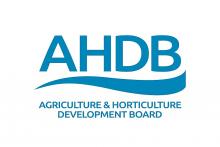Integrated Pest Management highlights the growth of a healthy crop with the least possible disruption to agro-ecosystems and encourages natural pest control mechanisms. IPM is one of the tools for low-pesticide-input pest management, and IPM must now be implemented by all professional agchem users.
Share information, knowledge, resources and experience on how we can improve crop perfomance (yield, quality and profitability) whilst reducing reliance on input, reducing impacts and improving environmental performance.
Recommended Content
Content below is from across the PEP community and is not necessarily endorsed by Stewards or by PEP
Connected Content
Foliar sprays can be more efficient than feeding crops via the soil: they can be more targeted, cheaper, and less environmentally damaging than soil-mediated crop nutrition. But this is not always so: can foliar nutrition be made reliable ... to support sustainable crop nutrition?
Biostimulants are increasingly available and are now widely marketed to farmers. While the jury is still out on a definitive definition, most definitions of biostimulants explain that they should stimulate plant nutrition processes independently of the product’s nutrient content with the aim of improving one or more of the following characteristics: nutrient efficiency, tolerance to abiotic stress, and/or quality.
Plants need around 12 essential mineral nutrients to grow: Nitrogen (N), Phosphorous (P), Potassium (K), Magnesium (Mg), Sulphur (S), Calcium (Ca), Iron (Fe), Manganese (Mn), Zinc (Zn), Copper (Cu), Boron (B) and Molybdenum (Mo).
ADAS are planning a Nutrition Challenge to compare the effect of different nutrition programmes on winter feed wheat yield, N uptake and gross margin, in the 2022/23 season. This is particularly timely following the recent dramatic rise in nitrogen fertiliser prices, which has forced the industry to re-examine nutrition strategies. Objectives of the project are to showcase good nutrition products and practices so that farmers are equipped and encouraged to use fertiliser better, for the benefit of the environment and their own gross margins.
The major commodity crops in the UK are wheat, barley, oilseed rape, field beans, sugar beet and potatoes, but around half of agricultural land grows grass.
Helping you protect your soil and improve its productivity. AHDB's GREATSoils inititiative brings together practical information on soil management as well as links to soils research and knowledge exchange. Whether you need an introduction to soil biology or a detailed guide to improving field drainage, AHDB has information and guidance to support you.
The James Hutton Institute combines strengths in crops, soils and land use and environmental research, and makes a major contribution to the understanding of key global issues, such as food, energy and environmental security, and developing and promoting effective technological and management solutions to these.
Rapid crop disease detection. SwiftDetect can reveal the level of disease in your crop even in the latent period, with results in 1 business day.
Share your ideas and experience of how to improve nutrient efficiency and reduce dependence on artificial fertilisers
Peas (pisum sativum) are grown either for combining dry seed (combining peas) or harvesting fresh as a vegetable or for freezing (vining peas).
Mercury Environmental Systems Ltd. is a commercial organisation developing value-added applications from space-based data. The company’s core offering is the provision of data to aid farming, ecological and environmental decision-making, which is produced via a crop model that is constrained by satellite data.
The Wheat Growth Guide was first published in 1999, following extensive measurement of a range of reference crops in HGCA funded projects. The AHDB Wheat growth guide allows crop progress, structure and final performance to be measured and compared against a series of UK benchmarks. To manage crops effectively, it is important to set targets, assess progress, adjust inputs and monitor success. Our wheat growth guidance outlines the main crop growth stages and components of yield, as well as the opportunities for management.
Our expertise in plant nutrition enables us to meet customer needs in crop health, efficiency and cost-effectiveness. Having been established for over 25 years, our bespoke range of products includes seed treatments, nutritional supplements, biostimulants and phosphites, which can be tailored to customer specifications.
This Topic doesn't yet have a Stewarded summary, but connected groups, content and organisations show below. Click the 'Ask to Join' button if you would like to be a Steward for this Topic and provide a summary of current knowledge and recommend useful resources, organisations, networks and projects. "Like" this Topic if you would like to see it prioritised for providing a wikipedia style summary.
Are you interested in Crop Monitoring? Join this club to share ideas and experiences with the tools that are out there, and perhaps develop proposals and projects.
An ADAS report to DEFRA in 1998 highlighting key trends and research priorities for the sunflower industry in the UK Sunflowers (Helianthus annuus var. macrocarpus) are in high demand due to the culinary, confectionary, bird-seed and industrial uses of their seeds (and thus oils), in addition to the popularity of the flowers in horticulture. At the time of this report in 1998, the UK imported ~350,000 tonnes of seed annually. Whilst sunflower can be grown in the UK, there are a number of challenges including limited drilling dates to comply with soil temperature requirements, and careful monitoring of a range pests and diseases that sunflower is susceptible to. Further risks such as a late harvest time and the possibility of sunflower itself becoming a weed in following crops meant many farmers were not considering growing sunflowers on their farms. Based on a survey of UK farmers (including both sunflower growers and non-growers), the key factors reported that would encourage more UK farmers to adopt sunflower crops were… To convince farmers of profitability Guaranteed establishment of the crop Earlier harvests Good disease and weed control More information on growing the crops This project provided a comprehensive review of growing sunflower as an arable crop in the UK. You can find the entire report linked at the bottom of this article (including historical and market information on sunflowers) but some of the key sections are highlighted here. Note all information is accurate for the time of this report (1998).
Review by ADAS (Kate Storer) for AHDB in 2016 into the value of biostimulants.
Warwick Crop Centre is a national centre of excellence for research on fresh produce. We provide post-graduate training and specialise in research projects promoting sustainable agriculture, horticulture and food security.
Agro Mavens helps you and your business get talked about in the world of agriculture and agritech. A specialist marketing and communications agency for agriculture, from our base in the UK we work with agriculturally active brands all around the world, from multinationals to start-ups.
Nitrogen residue following different crops is an important consideration in the N fertiliser requirement of the subsequent crop and one of the key determinants of N fertiliser recommendations in the UK.
Join us for the third (and final) Cheltenham Monitor Farm meeting of Winter 2023/24.
Find out about the different types of cover crops, their potential benefits, and how to grow and evaluate them.
This guidance provides an easy reference to the major broad-leaved and grass weeds in the UK, including how to identify and manage them based on an understanding of their biology.
Peas are a very important crop to growers as they provide a valuable spring sown break crop which supplies product for processing, seed, food and feed uses.
Understanding the factors that impact nutrient use efficiency (NUE) is key to improving nutrient management planning.
The ADAS soils and nutrients team will share and discuss results from our recent cover crop research with Affinity Water, Anglian Water, and Portsmouth Water.
Choosing practical and impactful integrated pest management (IPM) approaches and tools is essential. However, putting IPM research into practice in a commercial farm situation can be challenging.
On many arable farms, modern agricultural production has seen the continual removal of residues and intensive tillage of the soil.
A well-managed cover crop can conserve and protect the soil, boost productivity, capture nitrogen and phosphorus leftover from a main crop or from fall applied manure, and if harvested in the spring, provide additional forage for dairy cattle and other livestock.
Legumes form symbiotic relationships with soil bacteria called rhizobia. Rhizobia form nodules on legume roots where atmospheric nitrogen (N) from soil pores is fixed into plant-available N and fed to plants.
At a time when sustainable agriculture and environmental stewardship are vital, improving the nutrient use efficiency (NUE) of organic manures is a crucial goal.
There is no shortage of information available on cover crops. However, successfully integrating cover crops into arable rotations, while understanding and navigating the positive and negative impacts can be difficult.
Intercropping is known to have environmental and economic benefits, but which varieties work best together in a UK climate?
Making the most of farm data collected each season can seem a challenge. However, improving our understanding of how to interpret and put data to work can improve farming systems.
Catch crops are grown post-harvest or following silage, these crops hunt nutrients to reduce leaching from the soil while also allowing cover for the soil which prevents erosion.
Cereals is the leading technical event for arable farmers and agronomists in the UK.
Nitrogen (N) is not a scarce element on earth but the most abundant forms (N2 gas in the atmosphere and N fixed in the earth’s crust and sediments) are not directly available for plants.
PGRO Chief Executive Roger Vickers talks us through one of PGRO's intercropping trial plots.
Results from a field lab investigating if it's possible to irrigate with saline water.
Through Innovative Farmers, a group of organic and conventional farmers have teamed up with the Organic Research Centre and AHDB to investigate how to grow living mulches.
Root crops present a particular challenge to farmers who are trying to adopt regenerative practices.
In a recent RASE Farm of the Future webinar, three farmers shared their experiences of putting regenerative farming theory into practice.
Based on RL data and parental diversity information, use the variety blend tool to select three-way or four-way mixes for on-farm testing.
Beef cattle in the arable rotation has many benefits to both beef and arable producers. But what are the costs and margins involved?
This webinar will be comprised of three presentations. Matteo Poggia, Agrocares, Netherlands will describe Practical application of fusing spectroscopic techniques in routine soil analysis: Lab-in-a-Box (LiaB) concept. This will be followed by Prof. Uri Yermiyahu, Volcani Institute, Israel and Sanjay Namdev Biradar, ICL Fertilisers India who will present the science and operational experiences of the ICLeaf crop leaf scanning technology.
Good cover crop destruction will help to pave the way for successful spring cover crop establishment.
The headline may appear defeatist from the off, but the wet 2023-24 autumn and winter period will impact many crops already sown and those intended to be sown in the coming spring, says Dick Neale (Hutchinsons Technical Manager).
Discover how, why, and when field drainage is important, as well as best practice for installation, maintenance and repairs.
Join us as we take a deep dive into the world beneath our feet, from the micro to the macro biology of soils.
This manual provides an in-depth review of the applications of crop rotation-including improving soil quality and health, and managing pests, diseases, and weeds.
'Agricultural economists Graham Brookes and Stuart Smyth warn that we must learn the lessons from past experience of divergent international regulation of agricultural innovations.'
Cover crops should be viewed as a long-term investment in improved soil health and farm management.
Ever wondered which regenerative arable farming practices are the most effective or which combinations work best together?
Join us (AHDB) for a meeting at McGregor Farms, Coldstream Mains, in June.
Join ADAS and AHDB to see the plot demonstrations and discuss pests, weeds and diseases with technical updates and experts on hand.
Worth billions of dollars annually and continuing to expand, the global biostimulants market offers potential for growers. AHDB Environment Scientist Joanna McBurnie explores the product types, evidence of their benefits and usage considerations.
Light powers photosynthesis in plants, and controlling light therefore has a direct impact on ag






